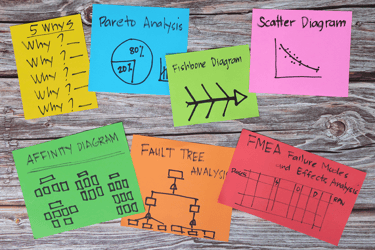The Packaging Industry's Sustainability Challenge: Why ERP Systems Are Essential for Success A straightforward guide to navigating sustainability regulations across folding carton, flexible...
10 tips for a successful packaging software change project
Are you considering investing in software to futureproof your packaging business? If so, you may need help with where to begin.
In a rapidly evolving landscape like the packaging industry, harnessing the power of new software solutions is essential. Yet, embarking on a system change project can be intimidating, especially without a well-defined plan.
Here, we've compiled 10 essential insights from our 30+ years of experience to guide your project towards success.
1. Assign key users for each department to perform gap analysis
It is crucial to appoint key users in each department to conduct a comprehensive gap analysis of current processes. Clearly define specific areas to evaluate, ensuring valuable time is spent assessing systems that meet your core requirements.
This approach helps pinpoint project objectives and critical areas early on, streamlining the project's focus.
2. Engage with the board to define project objectives and deadline
Many projects start with an individual situation or use case, and while there is nothing wrong with that, for a project to succeed, getting the support and sponsorship of the board with precisely defined objectives and timelines is critical.
This alignment ensures the project team’s direction remains clear, guaranteeing that project delivery aligns seamlessly with your objectives.
3. Align with your company’s strategic objectives
Decisions should resonate with your company's immediate and long-term strategic goals. Changing software systems is a long-term commitment. For example, consider future expansion and diversification plans and the system's ability to accommodate them, especially if your business is considering mergers and rapid growth.
4. Select suitable suppliers when evaluating solutions
Carefully choose suppliers that align with your company’s size and segment – both from the standpoint of where you are currently and with your longer-term plans.
Additionally, suppliers with an implementation and support team that communicates effectively in your language and time zone and understands our industry's specifications will further enhance the clarity required to make effective decisions while minimizing unnecessary time and customization costs.
5. Involve key users in solution pitch meetings
While not everyone needs to attend every module presentation, key users should participate in discussions relevant to their respective areas. This streamlines communication, minimizes disruptions to daily operations, and optimizes time management.
Involving the team during procurement also helps with overall adoption. If teams are involved early and understand what you are looking to achieve, they are more likely to buy into your strategic vision.
Having experts in key areas also helps to give a more thorough evaluation of all system areas, given that different user profiles will have slightly different perspectives on what a system should deliver.
6. Allocate the budget dedicated to the change project
After reviewing the market for solution providers, you should set aside a separate budget for the change project. This will allow you to see the project through to completion. This approach ensures that resources are allocated effectively and that the project stays on track.
7. Define start dates, decision milestones, and implementation kick-off
Set clear start dates for evaluation, decision-making, and implementation. Having a clear roadmap with defined timelines for project phases enhances organization, ensuring that every step is followed meticulously and maintains visibility on the project's progress; this way, you guarantee the expected result.
8. Establish a clear decision-making process
Clearly define who can make what decisions throughout the process, and factor in the time it will take for each team to make that call. For example, if decisions require monthly board meetings, ensure the project schedule accounts for these milestones.
9. Remain open-minded
When lifting the lid on a world of possibilities, it’s easy to get carried away and start planning to deploy too many features in the first phase of the project.
Here, the mindset should be to explore the options that will provide the most robust foundation for future expansion.
Your change project consultant should be consultative and not simply sell you the world. A crawl-walk-run approach will allow you to grow into your solution, offering ROI before expanding on features built on the most solid foundations.
10. Adhering to deadlines is key
The packaging industry's workload can be unpredictable, so minimizing project duration is critical to optimizing results and reducing costs. Lengthening the time between activities or postponing steps risks the loss or confusion of crucial information, compromising the outcome.
Consistently meeting bite-size deadlines will ensure the benefits remain visible and support the ROI of the project.
Conclusion
Navigating the ever-evolving packaging technology landscape successfully relies on meticulous planning, clear communication, and alignment with broader business strategies. By adhering to these ten principles, you can embark on system change projects in the packaging industry with confidence and achieve sustainable success.




